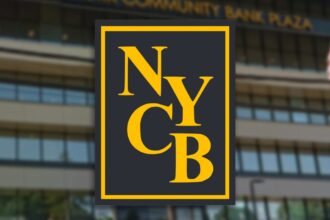JPMorgan Chase & Co. kicks off what could be the most closely-watched earnings reporting season in more than a decade on Friday, April 14, after the U.S. largest bank collapse since the 2008 financial crisis, sharp drops in bank stocks, and recessionary signals in the bond market rocked the sector during the quarter.
To make matters worse, JPMorgan Chase & Co.
JPM,
CEO Jamie Dimon said April 4 in his annual letter to shareholders that the banking crisis is not over.
Also Read: Banking sector’s growing political might could blunt reform in wake of SVB failure, experts warn
In a sign that investors see a looming recession, the bond market’s yield curves inverted to their widest levels in decades during the quarter. The inversion means that interest yields on longer-dated U.S. Treasury securities such as the 10-year note
TMUBMUSD10Y,
are below that of a U.S. two-year Treasury
TU00,
a signal that investors are piling into shorter-term debt as a haven for trouble ahead.
It’s also a sign that longer-term investors expect the Federal Reserve to reverse course in a recession and allow interest rates to fall again, which would push up the market values of long-term bonds.
During March 7, for example, the interest yield on a two-year note rose to 5.015%, its highest levels since 2007, even as the yield on 10-year Treasury notes fell to below 4% on the same day.
Also Read: Bond market’s most deeply inverted gauge is pointing to ‘large slowdown in economic growth’ and ‘deep recession’
A recession means credit losses for banks, which have already been raising the amounts they add to loan loss reserves each quarter.
So far, credit quality has held up, and banks have thus avoided an extreme period for additions to reserves to cover potential loan losses.
The Fed’s interest rate increases and the significant decline in value for bonds purchased by banks before a year ago remain critically important to Wall Street as well.
The KBW Nasdaq Bank Index
BKX,
lost 18.7% of its value in the first quarter, compared to a 16.8% increase during the same period for the Nasdaq
COMP,
and a 7% gain by the S&P 500
SPX,
The Financial Select Sector SPDR exchange-traded fund
XLF,
fell 6% in the first quarter, while the SPDR S&P Regional Banking ETF
KRE,
lost 25.3% of its value in the first quarter.
All of these factors and others have prompted analysts to cut their earnings estimates for both big banks and regional banks.
KBW on Thursday reduced its earnings estimates for banks across the board by 8% for 2023 and 11% in 2024, as it upgraded four bank stocks and downgraded two.
“Bank stock performance around 1Q23 earnings will likely be dictated by relative balance sheet performance (deposits, liquidity and capital),” KBW said. Analysts also expect to see lower net interest income growth and margins, as well as higher expenses and lower buybacks.
KBW said its most drastic reductions in earnings came with Goldman Sachs Group Inc.
GS,
and Morgan Stanley
MS,
because of their larger exposure to a slowdown in investment banking activity.
Wedbush analysts said they expect a challenging earnings season for banks as net interest income — the profit banks make by lending out deposits — comes under further pressure from banks shifting their balance sheet holdings to more liquid average earnings assets with lower yields, even as competition for deposits increases and borrowings increases.
“1Q earnings will likely be pressured, in our view, as we see banks shift towards a more defensive and conservative stance, and we anticipate a slew of downward revisions to guidance,” Wedbush analysts said in a March 29 research note. “We expect loan growth to slow from the strong pace over the prior few quarters as demand cools in light of higher rates and the uncertain economic environment.”
Among megabanks, JPMorgan Chase, Wells Fargo & Co.
WFC,
and Citigroup
C,
are due to report earnings on Friday, April 14.
First Republic Bank
FRC,
which has been in the spotlight for a run on deposits in March after Silicon Valley Bank failed, will report earnings on April 24, about a week later than it has reported first-quarter earnings in past years.
Analysts expect JPMorgan to earn $3.41 a share, down from a projection of $3.43 a share on Feb. 28 but ahead of the Dec. 30 estimate of $3.35 a share. The bank is expected to report first-quarter revenue of $36.14 billion.
Wells Fargo
WFC,
is expected to report first-quarter earnings of $1.13 a share, flat with the analyst projection of $1.13 a share on Dec. 30. Analysts are projecting revenue of $20.11 billion for the bank.
Citigroup is currently forecast to report earnings of $1.68 a share, down from $1.73 a share on Dec. 30, with revenue of $20.05 billion.
On April 18, Bank of America Corp.
BAC,
is expected to report first-quarter earnings of 83 cents a share, down from the consensus view of 88 cents a share on Dec. 30, according to FactSet. Analysts expect the company to report revenue of $25.31 billion.
Goldman Sachs earnings for the first quarter are also due on April 18, with analysts currently forecasting a profit of $8.63 a share, down from $9.73 a share on Dec. 30, with revenue of $12.98 billion.
On April 19, Morgan Stanley is expected to post a profit of $1.78 a share, down from a forecast of $1.84 a share on Dec. 30, with revenue of $14.08 billion.
On April 24, First Republic is expected to report first-quarter earnings of 97 cents a share, down from $1.57 a share on Dec. 30, on revenue of $1.22 billion. At last check, First Republic stock has lost 88.7% of its value in 2023.
Also Read: Bank stocks end tough quarter with gains as sector stabilizes despite outflows from savings accounts
Read the full article here










